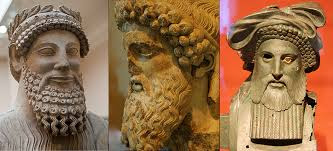The word “ Renaissance” means “Resurrection” or “re-birth” and it is the period in the European civilization right after the Middle Ages where we see that there is a huge growth for an interest in values and classical learning. New explorations of continents were seen, growth of commerce and paper , printing , the gunpowder and the compass came into existence. There was a revival of wisdom and learning all of a sudden after social decay and stagnation.
Just like anything else, fashion seemed to have evolved further. All the excessiveness in the costumes can be seen. Various countries took a different look and adapted this period in their own style. The Italian, German and French fashion seemed to have influenced what was left of Europe. Clothing was the only way of differentiating wealth and status of a person in the society. It was the ones with maximum wealth who were the trend-setters of that time. Several types of fashions can be looked into during this period because of the socio-economic gap.
The people who were with maximum wealth wore the most expensive and elaborate fabrics ranging from silk, velvets, brocades and also cotton. As cotton was difficult to source, it became a luxury to wear cotton. Fur was a must for the rich. It was also used as a lining on the insides of the garments. Dark tones and colours were used and detailed embroidery and gems and jewels were sewn onto the fabrics. The rich looked upon style much more than functionality and comfort.
As for the lower economic strata, there were simpler garments for them. But, as history shows, they also tried to imitate the richer classes and tried to implement some element of design from them into their garments. Wide sleeved chemises and tight bodices were commonly seen. The ‘slash and spread’ method of fashion was used a lot. A rule was passed down during that time that, only the rich could wear multiple colours and the peasants could only wear one. As a result, many rebelled against this discrimination and the people, would take their shirts, slash holes on them and wear it on top of another shirt while having puffing it through the holes. This technique get recognized and became a famous fashion in the Renaissance.
Fashion for the women was elaborate. Women wore long dresses with detachable sleeves. As a result, to keep their dresses clean , they also wore washable aprons/over dresses with linen chemise and shifts as underwear.
Their styles were multi layered and very extra-ordinary. For a woman with a wealthy background, she would have atleast 5 layers of skirts. Ie, a skirt, an under-skirt, over-bodice(vest), hoop and a collar. The women’s silhouette became stiff and puffed open with layers. The farthingale, which was a long cone shaped hoop skirt that women would wear while wearing a corset, to give a complete look to the attire. This era gave rise to the Corset fashion.
Coming to the men’s clothing, it had changed a few times. It only centered around the squared look of the silhouette which could only be made by the widening of the shoulders on vests and padding them properly. Padding was made out of horse hair huge wide sleeves and long vertical slashes, with another layer under the slashed garment was present.
A Jerkin was worn which was a short velvet jacket, mostly sleeveless, like a waistcoat. An upper Hose, full trunks was also seen, extended from the upper thighs to the waist. A Cod Piece was essential which was made from the same fabric as the jerkin. It was the forerunner of the fly. The Simar was worn , which was like a robe for men.
Also, no outfit was complete without a headpiece. . Women had varied choices, including the ‘pointed cone” style that played to the cone fashion for the women. Men’s headwear included a wide boundary to give it a very square shape and look.
(picture ref. :https://www.google.co.in/search?q=renaissance+clothing%5C&es_sm=93&tbm=isch&tbo=u&source=univ&sa=X&ved=0CB8QsARqFQoTCKGojOug8sgCFaUbpgodyikCSg&biw=1366&bih=643#imgrc=vFolHEDsFZfNPM%3)
References were taken from :-
http://history-world.org/renaissance.htm
http://www.cwu.edu/~robinsos/ppages/resources/Costume_History/renaissance.htm
https://en.wikibooks.org/wiki/Costume_History/Renaissance
http://www.historytoday.com/ulinka-rublack/renaissance-fashion-birth-power-dressing
http://www.vam.ac.uk/content/articles/r/clothing-and-jewellery/
http://www.cwu.edu/~robinsos/ppages/resources/Costume_History/renaissance.htm



































